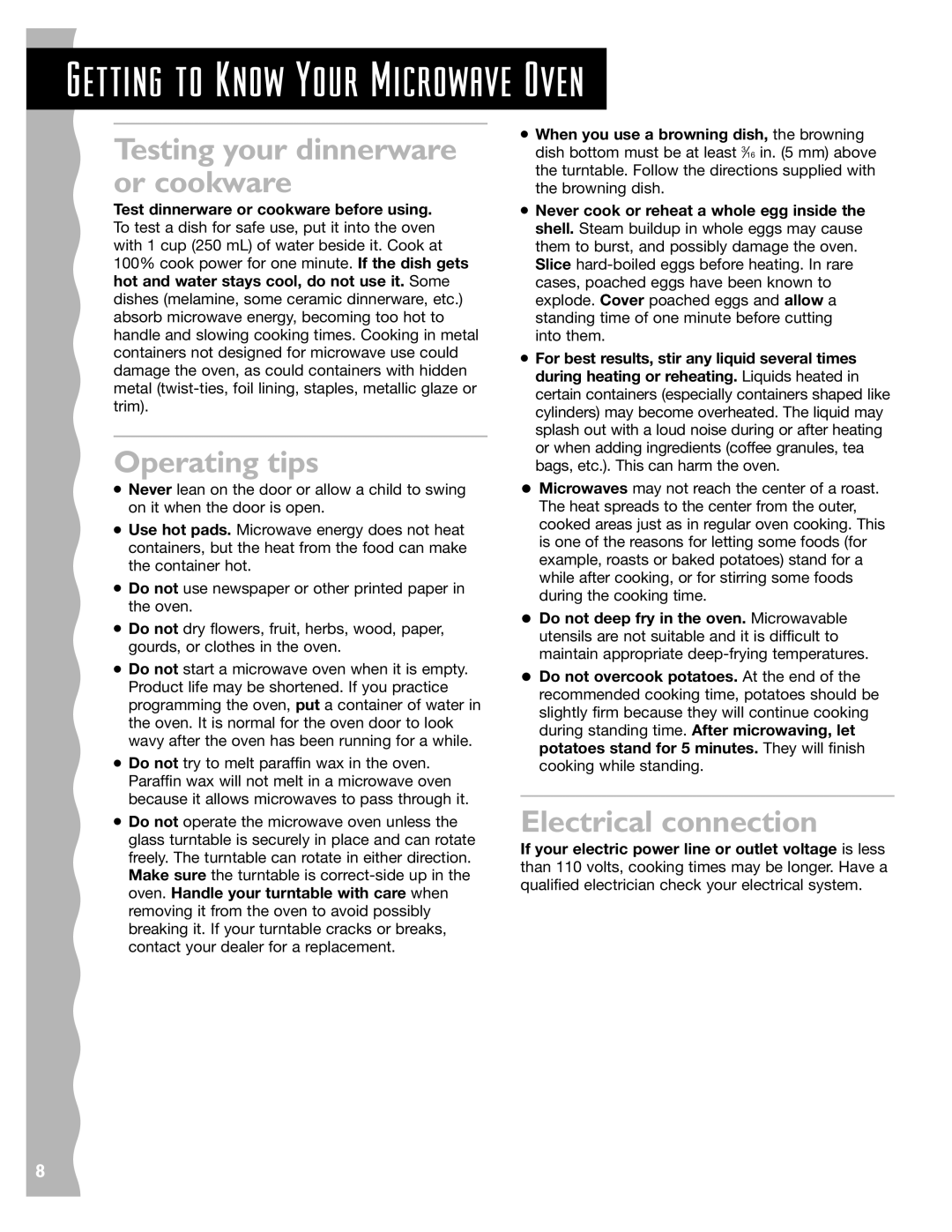
Getting to Know Your Microwave Oven
Testing your dinnerware or cookware
Test dinnerware or cookware before using.
To test a dish for safe use, put it into the oven with 1 cup (250 mL) of water beside it. Cook at 100% cook power for one minute. If the dish gets hot and water stays cool, do not use it. Some dishes (melamine, some ceramic dinnerware, etc.) absorb microwave energy, becoming too hot to handle and slowing cooking times. Cooking in metal containers not designed for microwave use could damage the oven, as could containers with hidden metal
Operating tips
•Never lean on the door or allow a child to swing on it when the door is open.
•Use hot pads. Microwave energy does not heat containers, but the heat from the food can make the container hot.
•Do not use newspaper or other printed paper in the oven.
•Do not dry flowers, fruit, herbs, wood, paper, gourds, or clothes in the oven.
•Do not start a microwave oven when it is empty. Product life may be shortened. If you practice programming the oven, put a container of water in the oven. It is normal for the oven door to look wavy after the oven has been running for a while.
•Do not try to melt paraffin wax in the oven. Paraffin wax will not melt in a microwave oven because it allows microwaves to pass through it.
•Do not operate the microwave oven unless the glass turntable is securely in place and can rotate freely. The turntable can rotate in either direction. Make sure the turntable is
•When you use a browning dish, the browning dish bottom must be at least 3⁄16 in. (5 mm) above the turntable. Follow the directions supplied with the browning dish.
•Never cook or reheat a whole egg inside the shell. Steam buildup in whole eggs may cause them to burst, and possibly damage the oven. Slice
•For best results, stir any liquid several times during heating or reheating. Liquids heated in certain containers (especially containers shaped like cylinders) may become overheated. The liquid may splash out with a loud noise during or after heating or when adding ingredients (coffee granules, tea bags, etc.). This can harm the oven.
•Microwaves may not reach the center of a roast. The heat spreads to the center from the outer, cooked areas just as in regular oven cooking. This is one of the reasons for letting some foods (for example, roasts or baked potatoes) stand for a while after cooking, or for stirring some foods during the cooking time.
•Do not deep fry in the oven. Microwavable utensils are not suitable and it is difficult to maintain appropriate
•Do not overcook potatoes. At the end of the recommended cooking time, potatoes should be slightly firm because they will continue cooking during standing time. After microwaving, let potatoes stand for 5 minutes. They will finish cooking while standing.
Electrical connection
If your electric power line or outlet voltage is less than 110 volts, cooking times may be longer. Have a qualified electrician check your electrical system.
8
